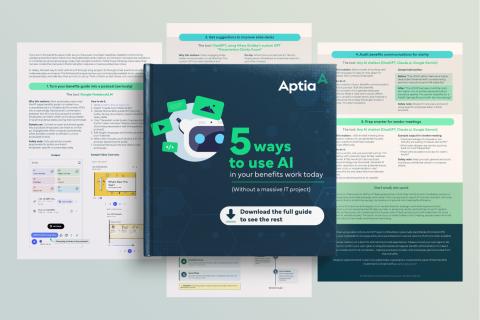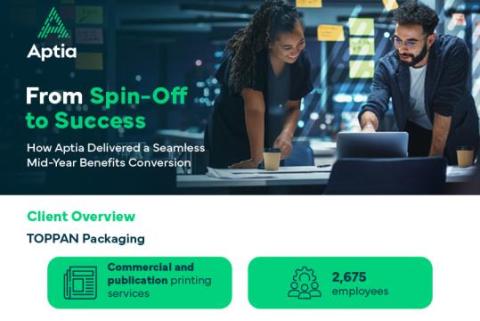TPR’s general code – six key points for pension schemes

All pension scheme trustees should now be familiar with the Pension Regulator’s (TPR) general code of practice. A year (or so) on, here is a checklist of considerations for trustees.
First, a brief recap.
The code was published last January and it came into force on 27 March 2024. It consolidated 10 existing codes of practice to set out clearly what TPR expects of a pension scheme with an effective system of governance (ESOG).
An ESOG is important for all occupational pension schemes, regardless of size, to make sure they comply with their statutory duties.
A core element of the code is the own risk assessment (ORA). This requires all pension schemes with 100 members or more to judge their governance and how successfully they are complying with the code. You can read the regulator’s ORA module here.
The code found trustees at different stages of compliance. Publication allowed those further on into the journey to put the finishing touches to their governance structure, planning and documentation. For others it was a starting gun, signalling the start of a race to establish a compliant and robust governance framework.
In this article, we set out some of the key points about the code for pension schemes to consider.
1 Deadlines for completing ORAs are looming
The code was flexible on the timing of ORAs, allowing schemes to complete them based on their individual scheme year-end dates. Lots of schemes’ financial years ended on 31 March or 5 April, leaving trustees of these schemes about nine months to carry out their first ORA.
Lots of schemes are still working to make sure their system of governance complies with the general code. Without an ESOG, a pension scheme can’t carry out an ORA, so it’s vital that schemes complete a gap analysis against the code as soon as possible.
ORAs don’t have to be repeated at set points in time, but all elements must be completed within a three-year cycle. This gives trustees the opportunity to plan the scheme’s subsequent ORA in a way that fits their objectives and scheme activities.
2 The ORA is a continuing process
Remember, the ORA isn’t just a one-off target – it’s an ongoing commitment.
In planning your ORA, you need to build in any projects or activities you are going to carry out. These might include preparing for pensions dashboards, Guaranteed Minimum Pension equalisation or risk transfer exercises.
This means that for some schemes, the ORA will look like a continuous assessment, with elements being split out over the three-year cycle, but others may set aside a dedicated period of a few months to undertake all aspects of the ORA.
Trustees should regularly review their ESOG and policies to make sure they align with the code. Trustees should reassess their governance needs to make sure that the ESOG is still proportionate to the size, nature, scale and complexity of the scheme’s activities and takes account of the specific circumstances the scheme faces.
3 Changes to the ESOG require a further ORA
It’s important to remember that any material change to the scheme’s ESOG or risk profile also triggers the need for a reassessment. Changes stemming from the new Pension Schemes Bill could prospectively cause this to happen.
In another example, the ESOG review may identify areas where data needs to be improved in advance of the scheme complying with pensions dashboards. This is an increasingly urgent matter with integration testing taking place for the largest schemes.
At Aptia, we are helping schemes with scheduling, assessing their individual needs and priorities from an administration perspective.
4 This is an opportunity to learn and improve
Don’t view the ORA as a burden or a box to be ticked. Instead, treat it as an opportunity to challenge how your scheme functions, and make it fit for the 21st century. There will be lessons along the way.
For example, it’s a chance to review your use of technology and how you communicate with your members. Automation and artificial intelligence will soon be standard technologies for pensions delivery, and we have launched our members’ app to engage with members who manage their lives on the move. TPR’s new innovation hub underlines the push for schemes to embrace technology to improve the member experience.
5 Schemes need to plan for their ORA now
Those schemes still on the pathway to making sure their scheme’s ESOG complies with the general code should be planning for the first ORA. Time is short and, if it’s not already under discussion, trustees should start considering how the ORA will be carried out and by whom.
An ORA doesn’t have to be independent, but it must be objective. Governing bodies should be involved because they are ultimately responsible and should know their schemes better than anyone else. But to get an objective view, schemes should consult other advisers. Of course, the party responsible for the day-to-day administration of the scheme and delivery of benefits will have a vital role to play.
All these potential participants are busy and, as with any project, it’s important to secure their time in advance.
6 TPR will require more information
At Aptia, we have been in regular contact with TPR, which started by sending us questionnaires covering the administrative aspects of the code. We have responded with information about our systems, processes and procedures to ensure effective oversight and management, giving TPR the assurances it needed.
Looking forward, we expect TPR to ask for more information about the ESOG and ORA in pension scheme returns. TPR will want to see good progress on governance so that schemes are in a position to complete their ORA on time.
At Aptia, our client directors are working with trustees and other advisers to review their scheme’s system of governance and compliance with the code. As ever, the sooner you involve us, the better your chances of a smooth and timely process.
The content provided in our publications, including articles on our website and podcasts, is intended solely for informational purposes. It should not be construed as professional advice and should not be relied upon for any purpose. We strongly recommend seeking appropriate professional advice tailored to your specific circumstances before making any decisions based on this information.



